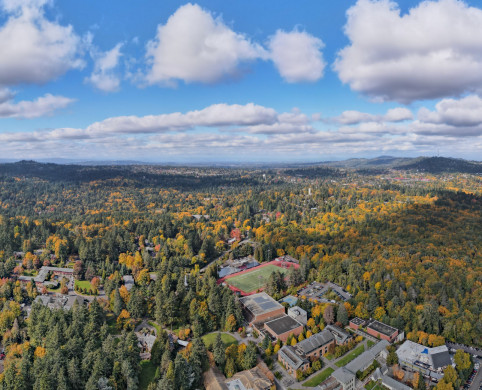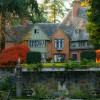- <a href="/live/image/gid/431/width/650/102451_GRAD-1123-Aerials_01.jpg" class="lw_preview_image lw_disable_preview" tabindex="-1"><picture class="lw_image lw_image102451"> <source type="image/jpeg" media="(max-width: 500px)" srcset="/live/image/gid/431/width/500/height/240/crop/1/102451_GRAD-1123-Aerials_01.rev.1706900995.jpg 1x, /live/image/scale/2x/gid/431/width/500/height/240/crop/1/102451_GRAD-1123-Aerials_01.rev.1706900995.jpg 2x, /live/image/scale/3x/gid/431/width/500/height/240/crop/1/102451_GRAD-1123-Aerials_01.rev.1706900995.jpg 3x"/> <source type="image/jpeg" media="(max-width: 800px)" srcset="/live/image/gid/431/width/800/height/383/crop/1/102451_GRAD-1123-Aerials_01.rev.1706900995.jpg 1x, /live/image/scale/2x/gid/431/width/800/height/383/crop/1/102451_GRAD-1123-Aerials_01.rev.1706900995.jpg 2x, /live/image/scale/3x/gid/431/width/800/height/383/crop/1/102451_GRAD-1123-Aerials_01.rev.1706900995.jpg 3x"/> <source type="image/jpeg" media="(max-width: 1200px)" srcset="/live/image/gid/431/width/1200/height/575/crop/1/102451_GRAD-1123-Aerials_01.rev.1706900995.jpg 1x, /live/image/scale/2x/gid/431/width/1200/height/575/crop/1/102451_GRAD-1123-Aerials_01.rev.1706900995.jpg 2x"/> <source type="image/jpeg" media="(min-width: 1201px)" srcset="/live/image/gid/431/width/1440/height/690/crop/1/102451_GRAD-1123-Aerials_01.rev.1706900995.jpg 1x, /live/image/scale/2x/gid/431/width/1440/height/690/crop/1/102451_GRAD-1123-Aerials_01.rev.1706900995.jpg 2x"/> <img src="/live/image/gid/431/width/1440/height/690/crop/1/102451_GRAD-1123-Aerials_01.rev.1706900995.jpg" alt="Aerial of graduate campus." width="1440" height="690" srcset="/live/image/scale/2x/gid/431/width/1440/height/690/crop/1/102451_GRAD-1123-Aerials_01.rev.1706900995.jpg 2x" data-max-w="3200" data-max-h="2482"/> </picture> </a><div class="hero-full_image_caption collapsable-caption"> Lewis & Clark is greater than the sum of our parts.<br/>Credit: Suhail Akram BA ’24</div>
- <a href="/live/image/gid/431/width/650/102452_law_aerial.jpg" class="lw_preview_image lw_disable_preview" tabindex="-1"><picture class="lw_image lw_image102452"> <source type="image/jpeg" media="(max-width: 500px)" srcset="/live/image/gid/431/width/500/height/240/crop/1/102452_law_aerial.rev.1706900996.jpg 1x, /live/image/scale/2x/gid/431/width/500/height/240/crop/1/102452_law_aerial.rev.1706900996.jpg 2x, /live/image/scale/3x/gid/431/width/500/height/240/crop/1/102452_law_aerial.rev.1706900996.jpg 3x"/> <source type="image/jpeg" media="(max-width: 800px)" srcset="/live/image/gid/431/width/800/height/383/crop/1/102452_law_aerial.rev.1706900996.jpg 1x, /live/image/scale/2x/gid/431/width/800/height/383/crop/1/102452_law_aerial.rev.1706900996.jpg 2x, /live/image/scale/3x/gid/431/width/800/height/383/crop/1/102452_law_aerial.rev.1706900996.jpg 3x"/> <source type="image/jpeg" media="(max-width: 1200px)" srcset="/live/image/gid/431/width/1200/height/575/crop/1/102452_law_aerial.rev.1706900996.jpg 1x, /live/image/scale/2x/gid/431/width/1200/height/575/crop/1/102452_law_aerial.rev.1706900996.jpg 2x"/> <source type="image/jpeg" media="(min-width: 1201px)" srcset="/live/image/gid/431/width/1440/height/690/crop/1/102452_law_aerial.rev.1706900996.jpg 1x, /live/image/scale/2x/gid/431/width/1440/height/690/crop/1/102452_law_aerial.rev.1706900996.jpg 2x"/> <img src="/live/image/gid/431/width/1440/height/690/crop/1/102452_law_aerial.rev.1706900996.jpg" alt="Aerial of law campus." width="1440" height="690" srcset="/live/image/scale/2x/gid/431/width/1440/height/690/crop/1/102452_law_aerial.rev.1706900996.jpg 2x" data-max-w="3200" data-max-h="2400"/> </picture> </a><div class="hero-full_image_caption collapsable-caption"> Lewis & Clark is greater than the sum of our parts.<br/>Credit: Suhail Akram BA ’24</div>
- <a href="/live/image/gid/431/width/650/102443_aerial.jpg" class="lw_preview_image lw_disable_preview" tabindex="-1"><picture class="lw_image lw_image102443"> <source type="image/jpeg" media="(max-width: 500px)" srcset="/live/image/gid/431/width/500/height/240/crop/1/102443_aerial.rev.1706900987.jpg 1x, /live/image/scale/2x/gid/431/width/500/height/240/crop/1/102443_aerial.rev.1706900987.jpg 2x, /live/image/scale/3x/gid/431/width/500/height/240/crop/1/102443_aerial.rev.1706900987.jpg 3x"/> <source type="image/jpeg" media="(max-width: 800px)" srcset="/live/image/gid/431/width/800/height/383/crop/1/102443_aerial.rev.1706900987.jpg 1x, /live/image/scale/2x/gid/431/width/800/height/383/crop/1/102443_aerial.rev.1706900987.jpg 2x, /live/image/scale/3x/gid/431/width/800/height/383/crop/1/102443_aerial.rev.1706900987.jpg 3x"/> <source type="image/jpeg" media="(max-width: 1200px)" srcset="/live/image/gid/431/width/1200/height/575/crop/1/102443_aerial.rev.1706900987.jpg 1x, /live/image/scale/2x/gid/431/width/1200/height/575/crop/1/102443_aerial.rev.1706900987.jpg 2x"/> <source type="image/jpeg" media="(min-width: 1201px)" srcset="/live/image/gid/431/width/1440/height/690/crop/1/102443_aerial.rev.1706900987.jpg 1x, /live/image/scale/2x/gid/431/width/1440/height/690/crop/1/102443_aerial.rev.1706900987.jpg 2x"/> <img src="/live/image/gid/431/width/1440/height/690/crop/1/102443_aerial.rev.1706900987.jpg" alt="Aerial of campus" width="1440" height="690" data-max-w="3200" data-max-h="1288"/> </picture> </a><div class="hero-full_image_caption collapsable-caption"> Lewis & Clark is greater than the sum of our parts.<br/>Credit: Suhail Akram BA ’24</div>
Strategic Planning
Faculty and staff from all three of our schools are invited to submit proposals for Big Ideas: opportunities that will differentiate us and inspire support among donors and funders. Proposals are due on May 31, and a proposal planning workshop will be held on April 18.
The Strategic Planning Process and Updates
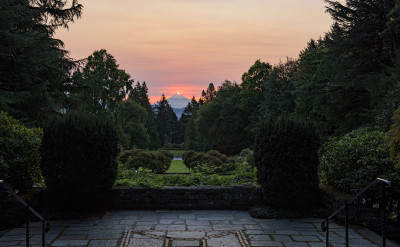
Updating the Mission Statement
As part of the strategic planning process, we are revising the institutional mission statement. The current statement has not changed since the 1990s and is not fully reflective of who we are today or of the collective strengths of the three schools: the College of Arts and Sciences, the Graduate School of Education and Counseling, and the School of Law.
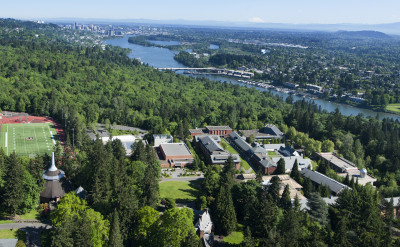
Big Ideas: Request for Proposals
This is a chance to be part of building a new future at Lewis & Clark. Successful proposals will create new opportunities for our students, for the institution, for yourselves, and for our donors. They will bring new resources to support work that you care deeply about.
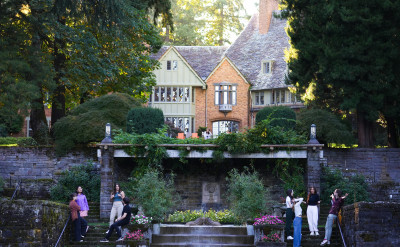
Timeline of Strategic Planning
Our strategic plan process began in earnest in fall 2023. We have built out a timeline showing events that have already occurred to date and those still to come, with a goal of implementing the final plan in fall 2024.
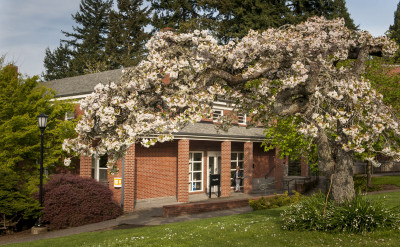
Draft Strategic Plan Themes
While we are still in the initial draft stage of our plan, here are the seven themes we are focusing on.
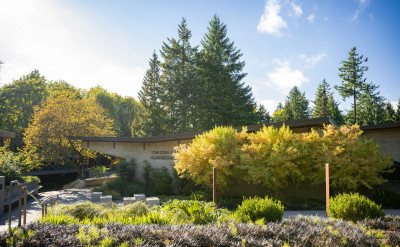
Ideas Generated
The planning committee has held a number of meetings and exercises to focus on our key strengths to strongly consider building upon, opportunities for cross-school collaborations, and common points and themes.
Message From the President
RSVP for the Strategic Plan Big Ideas Workshop on April 18
If you’ve begun formulating new plans or thinking about enhancing existing activities as part of the Strategic Plan Big Ideas process, we hope that you are planning to join us for the in-person workshop on Thursday, April 18, from 2 to 4 p.m., in South Chapel.
Contact Us
If you have any questions or comments about the process, the themes, the mission statement, or upcoming events, please reach out to us here: strategicplan@lclark.edu
email strategicplan@lclark.edu
